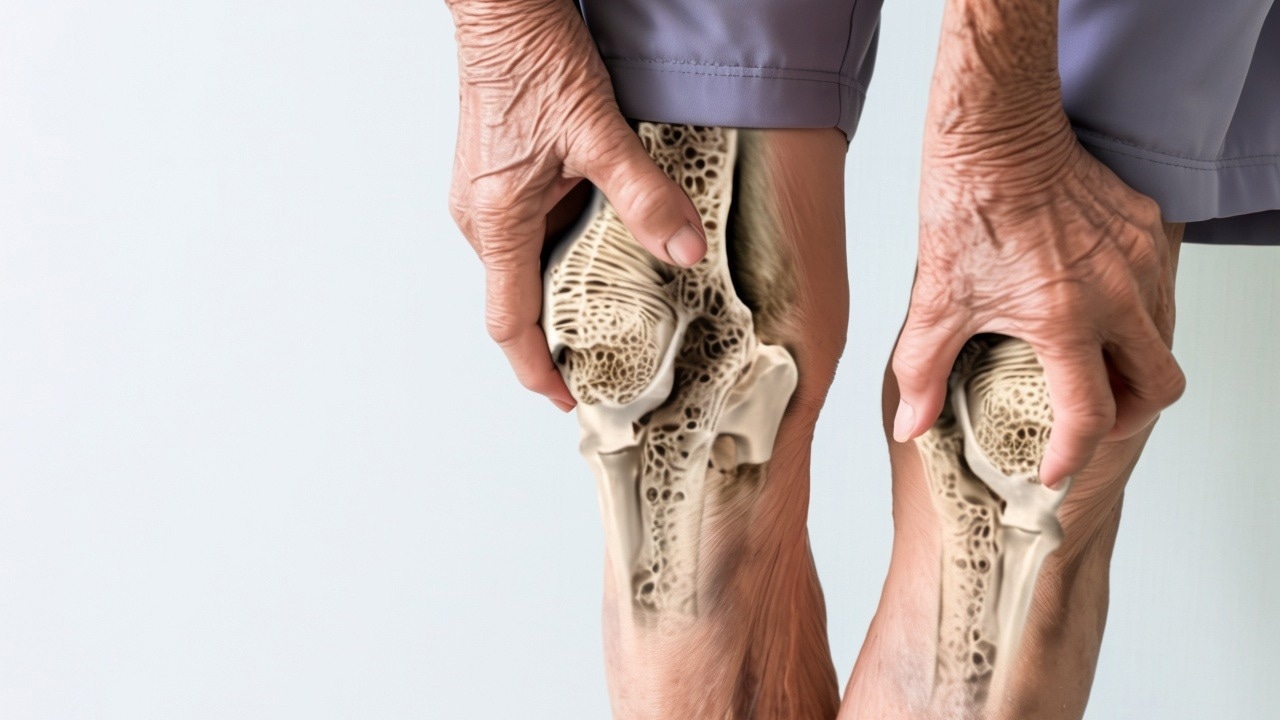A study reveals that a calorie-restricted Mediterranean diet paired with physical activity preserves bone health in older adults with metabolic syndrome—especially women—highlighting a promising approach to prevent age-related osteoporosis.
Study: Mediterranean Diet, Physical Activity, and Bone Health in Older Adults: A Secondary Analysis of a Randomized Clinical Trial. Image Credit: Shutterstock AI Generator / Shutterstock.com
A recent JAMA Network Open study evaluates the effects of a weight-loss lifestyle intervention on age-related bone deterioration.
Aging and bone health
Aging is associated with low bone mineral density (BMD) and total bone mineral content (BMC), which increases the risk of osteoporotic fractures. As the global population continues to age, the prevalence of osteoporosis, which is associated with reduced quality of life and significant patient morbidity, has also risen. Thus, it is crucial to identify behavioral interventions that can mitigate the effects of osteoporosis to reduce the burden of this disease on the global healthcare sector.
A balanced diet and regular physical activity are effective strategies that have been shown to prevent osteoporotic fractures, particularly among vulnerable patient populations like the elderly and obese. Since weight loss is frequently recommended to manage obesity-related conditions, it is essential to determine the role of these strategies on bone health to support the development of more effective weight loss strategies with minimal impact on age-related bone deterioration.
Adherence to a healthy diet during the energy reduction phase of weight loss could support the maintenance of sufficient BMD and BMC. To date, several studies have reported the benefits of the Mediterranean diet on bone health, irrespective of an individual’s age. However, few studies have analyzed the effect of energy-reduced diets designed for weight loss to manage obesity and osteoporotic risk.
About the study
The Prevención con Dieta Mediterránea-Plus (PREDIMED-Plus) randomized clinical trial was conducted across twenty-three healthcare centers in Spain. Herein, researchers investigated the effects of a multifactorial intervention on age-related BMD, total BMC, and low BMD prevalence among older adults with metabolic syndrome and overweight or obesity over three years of follow-up.
Different lifestyle-based interventions considered in this analysis included an energy-reduced Mediterranean diet, increased physical activity, and behavioral support.
Community-dwelling adults between 55 and 75 years of age with at least three metabolic syndromes and were either overweight or obese were recruited to participate. Initially, 6,874 eligible participants were randomly assigned to either the control group or intervention group, stratified by center, sex, and age at a 1:1 ratio.
The control group was advised to follow an ad libitum traditional Mediterranean diet without energy restriction or specific physical activity recommendations. Comparatively, the intervention group received specific Mediterranean diet recommendations with a 30% energy reduction. The intervention cohort also received counseling to gradually increase their physical activity levels to meet recommended criteria by the World Health Organization (WHO) for adults 65 years of age and older.
In addition to physical activity and diet, study participants were subjected to behavioral and motivational strategies to facilitate the sustainable adoption of dietary and lifestyle modifications. Dual-energy x-ray absorptiometry (DXA) was also used to assess BMD variables and total BMC at baseline, as well as one and three years of follow-up.
Targeted lifestyle changes lead to stronger bones in older adults
A total of 924 individuals with metabolic syndrome and DXA scan data included in the final study cohort. At baseline, 464 study participants were included in the control group and 460 in the intervention group, 49.1% of whom were female with a mean age of 65.1 years.
As compared to controls, the intervention group experienced a greater reduction in total body weight by 3.3% and 3% over one and three years, respectively. A significant difference in total body weight changes was observed between the two groups at -2.8 kg and -2.2 kg after one and three years, respectively.
After adjusting for multiple covariate factors like smoking status, age, sex, educational level, and medical history, significant differences in mean changes between groups were observed.
For example, as compared to controls, study participants in the intervention group exhibited an overall increase in lumbar spine (L1-L4) BMD after three years. Furthermore, a protective association was established in women but not in men.
Intention-to-treat analysis revealed that, after three years, an increase in total femur, lumbar spine (L1-L4), and femoral trochanter BMD occurred among women in the intervention group as compared to controls. Likewise, the completer’s case analysis also indicated that after three years, women in the intervention exhibited a greater increase in lumbar spine (L1-L4) BMD as compared to controls.
The sensitivity analysis results were consistent with these findings. Notably, the overall three-year intervention effect was more significant for total BMC in women as compared to men.
Conclusions
A modest hypocaloric Mediterranean diet combined with physical activity had a more profound effect on bone health in older women with metabolic syndrome, especially at the lumbar level, as compared to ad libitum Mediterranean diet recommendations.
Additional studies are needed to assess the impact of this weight loss lifestyle intervention on bone health for longer follow-up periods. Nevertheless, the study findings support incorporating this intervention into future public health strategies aiming to reduce the prevalence of osteoporotic fractures in older adults.
Journal reference:
- Vázquez-Lorente, H., Garcia-Gavilan, J. F., Shyam, S., et al. (2025) Mediterranean Diet, Physical Activity, and Bone Health in Older Adults: A Secondary Analysis of a Randomized Clinical Trial. JAMA Network Open 8(4):e253710. doi:10.1001/jamanetworkopen.2025.3710


